- Home
- George R. R. Martin
The Book of Magic
The Book of Magic Read online
The Book of Magic is a work of fiction. Names, places, and incidents are the products of the author’s imagination or are used fictitiously. Any resemblance to actual events, locales, or persons, living or dead, is entirely coincidental.
Copyright © 2018 by The Estate of Gardner Dozois
All rights reserved.
Published in the United States by Bantam Books, an imprint of Random House, a division of Penguin Random House LLC, New York.
BANTAM BOOKS and the HOUSE colophon are registered trademarks of Penguin Random House LLC.
Individual story copyrights appear on this page
LIBRARY OF CONGRESS CATALOGING-IN-PUBLICATION DATA
Names: Dozois, Gardner R. editor. | Dozois, Gardner R., editor.
Title: The book of magic / edited by Gardner Dozois.
Description: New York: Bantam, 2018.
Identifiers: LCCN 2018018549 | ISBN 9780399593789 (hardback) | ISBN 9780399593796 (ebook)
Subjects: LCSH: Fantasy fiction, American. | Fantasy fiction, English. | Short stories, American. | Short stories, English. | Magic—Fiction. | Witches—Fiction. | Wizards—Fiction. | BISAC: FICTION / Fantasy / Short stories. | FICTION / Fantasy / Epic.
Classification: LCC PS648.F3 B65 2018 | DDC 813/.0876608—dc23 LC record available at https://lccn.loc.gov/2018018549
Ebook ISBN 9780399593796
randomhousebooks.com
Book design by Caroline Cunningham, adapted for ebook
Cover design: Susan Schultz
Cover illustration: © Steve Youll
v5.4
ep
Contents
Cover
Title Page
Copyright
Introduction by Gardner Dozois
The Return of the Pig by K. J. Parker
Community Service by Megan Lindholm
Flint and Mirror by John Crowley
The Friends of Masquelayne the Incomparable by Matthew Hughes
Biography of a Bouncing Boy Terror, Chapter II: Jumping Jack in Love by Ysabeau S. Wilce
Song of Fire by Rachel Pollack
Loft the Sorcerer by Eleanor Arnason
The Governor by Tim Powers
Sungrazer by Liz Williams
The Staff in the Stone by Garth Nix
No Work of Mine by Elizabeth Bear
Widow Maker by Lavie Tidhar
The Wolf and the Manticore by Greg van Eekhout
A Night at the Tarn House by George R. R. Martin
The Devil’s Whatever by Andy Duncan
Bloom by Kate Elliott
The Fall and Rise of the House of the Wizard Malkuril by Scott Lynch
Dedication
Story Copyrights
By Gardner Dozois
About the Editor
BY GARDNER DOZOIS
Sorcerer, witch, shaman, wizard, seer, root woman, conjure man…the origins of the magic-user, the-one-who-intercedes-with-the-spirits, the one who knows the ancient secrets and can call upon the hidden powers, the one who can see both the spirit world and the physical world, and who can mediate between them, go back to the beginning of human history—and beyond. Fascinating traces of ritual magic have been unearthed at various Neanderthal sites: the ritual burial of the dead, laid to rest with their favorite tools and food, and sometimes covered with flowers; a low-walled stone enclosure containing seven bear heads, all facing forward; a human skull on a stake in a ring of stones…Neanderthal magic.
A few tens of thousands of years later, in the deep caves of Lascaux and Pech Merle and Rouffignac, the Cro-Magnons were practicing magic too, perhaps learned from their vanishing Neanderthal cousins. Deep in the darkest hidden depths of the caves at La Mouthe and Les Combarelles and Altamira, in the most remote and isolate galleries, the Cro-Magnons filled wall after wall with vivid, emblematic paintings of Ice Age animals. There’s little doubt that these cave paintings—and their associational phenomena: realistic clay sculptures of bison, carved ivory horses, the enigmatic “Venus” figurines, and the abstract and interlacing paint-outlined human handprints known as “Macaronis”—were magic, designed to be used in sorcerous rites, although how they were meant to be employed may remain forever unknown. These ancient walls also give us what may be the very first representation of a wizard in human history, a hulking, shaggy, mysterious, deer-headed figure watching over the bright, flat, painted animals as they caper across the stone.
So Magic predates Art. In fact, Art may have been invented as a tool to express Magic, to give Magic a practical means of execution—to make it work. So that if you go back far enough, artist and sorcerer are indistinguishable, one and the same—a claim that can still be made with a good deal of validity to this very day.
Stories about magic go back a similar distance, probably all the way back to when Ice Age hunters huddled around a fire at night, listening to the beasts who howled in the inky blackness around them. By the time that Homer was telling stories to fireside audiences in Bronze Age Greece, the tales he was telling contained recognizable fantasy elements—man-eating giants, spells and counterspells, enchantresses who turned men into swine—that were probably recognized as fantasy elements and responded to as such by at least the more sophisticated members of his audience. By the end of the eighteenth century, something recognizably akin to modern literary fantasy was beginning to precipitate out from the millennia-old body of oral tradition—folk tales, fairy tales, mythology, songs and ballads, wonder tales, travelers’ tales, rural traditions about the Good Folk and haunted standing stones and the giants who slept under the countryside—first in the form of Gothic stories, ghost stories, and Arabesques, and later, by the middle of the next century, in a more self-conscious literary form in the work of writers such as William Morris and George MacDonald, who reworked the subject matter of the oral traditions to create new fantasy worlds for an audience sophisticated enough to respond to the fantasy elements as literary tropes rather than as fearfully regarded, half-remembered elements of folk beliefs—people who were more likely to be entertained by the idea of putting a saucer of milk out for the fairies than to actually do such a thing.
By the late nineteenth and early twentieth centuries, most respectable literary figures—Dickens, Twain, Poe, Kipling, Doyle, Saki, Chesterton, Wells—had written fantasy in one form or another, if only ghost stories or Gothic stories, and a few, like Thorne Smith, James Branch Cabell, and Lord Dunsany, had even made something of a specialty of it. But as World War II loomed ever closer over the horizon, fantasy somehow began to fall into disrepute, increasingly being considered as unhip, “anti-modern,” non-progressive, socially irresponsible, even déclassé. By the sterile and unsmiling fifties, very little fantasy was being published in any form, and, in the United States at least, fantasy as a genre, as a separate publishing category, did not exist.
When the last Ice Age started, and the glaciers ground down from the north to cover most of the North American continent, thousands of species of plants and trees, as well as the insects, birds, and animals associated with them, retreated to “cove forests” in the south, in what would eventually come to be called the Great Smoky Mountains; in those cove forests, they waited out the long domain of the ice, eventually moving north again to recolonize the land as the climate warmed and the glaciers retreated. Similarly, the lowly genre fantasy and science fiction magazines—Weird Tales and Unknown in the thirties and forties, The Maga
zine of Fantasy & Science Fiction, Fantastic, and the British Science Fantasy in the fifties and sixties—were the cove forests that sheltered fantasy during its long retreat from the glaciers of social realism, giving it a refuge in which to endure until the climate warmed enough to allow it to spread and repopulate again.
By the midsixties, largely through the efforts of pioneers such as Don Wollheim, Ian and Betty Ballantine, Don Benson, and Cele Goldsmith, fantasy had begun tentatively to emerge from the cove forests. And after the immense success of J. R. R. Tolkien’s Lord of the Rings trilogy, the first American publishing line devoted to fantasy, the Ballantine Adult Fantasy line, was established. It would be followed by others in the decades to come, until by the current day fantasy is a huge, diverse, and commercially successful genre, one which has diversified into many different types: sword & sorcery, epic fantasy, high fantasy, comic fantasy, historical fantasy, alternate world fantasy, and others.
For the last few decades, the most common public image of the magic-user has almost certainly been that of the benign, white-bearded, slouch-hatted, staff-wielding wizard—an image primarily composed of a large measure of Tolkien’s Gandalf the Grey and J. K. Rowling’s Dumbledore, with perhaps a jigger of T. H. White’s Merlin thrown in for flavor. Throughout history, though, the magic-user has worn many faces, sometimes benevolent and wise, sometimes evil and malign—sometimes, ambiguously, both. To the ancient Greeks, magic was the Great Science. The famous mystic Agrippa considered magic to be the true path of communion with God. Conversely, to medieval European society, the magic-user was one who collaborated with the Devil in the spreading of evil throughout the world, in the corruption and ruination of Christian souls—and the smoke of hundreds of burning witches and warlocks filled the chilly autumn air for a hundred years or more. To some Amerind tribes, the magic-user was either malevolent or benign, depending on the use to which their magic was put. In fact, nearly every human society has its own version of the magic-user. In Mexico, the sorcerer is curandero, brujo, or bruja. In Haiti, they are houngan or quimboiseur; in Amerind lore, the Shaman or Singer; in Jewish mysticism, the kabbalist; in Gypsy circles, the chóvihánni, the witch; in parts of today’s rural America, the hoodoo or conjure man or root woman; to the Maori of New Zealand, the tohunga makutu…and so on, throughout the world, in the most “progressive” societies no less than the most “primitive.”
The fact is, we’re all still sorcerers under the skin, and magic seems to be part of the intuitive cultural heritage of most human beings. Whenever you cross your fingers to ward off bad luck, or knock on wood, or refuse to change your lucky underwear before the big game, or ensure the health of your mother’s back by not stepping on the cracks in the sidewalk—or, for that matter, when you deliberately step on them, with malice aforethought—then you are putting on the mantle of the sorcerer, attempting to affect the world through magic. Then you are practicing magic, as surely as the medieval alchemist puttering with his alembics and pestles, as surely as the bear-masked, stag-horned Cro-Magnon shaman making ritual magic in the darkness of the deep caves at Rouffignac.
In this anthology, I’ve endeavored to cover the whole world of magic. Here you will find benevolent white wizards and the blackest of black magicians. Here you’ll visit the troll-haunted hills of eighteenth-century Iceland…Victorian Ireland, where the hosts of the Sidhe are gathering for war…the remote wilderness regions of Appalachia and the hill-country of Kentucky, where ancient ghosts still roam…and the streets of modern-day New York City and Los Angeles, where dangerous magic lurks around every corner. Then you’ll visit worlds of the imagination outside the time and space we know…touring the fabled, enchanted metropolis of Calfia; the bleak marshes and crumbling towns of the Mesoge, where the dead come back to prey on the living; the grim city of Uzur-Kalden, at the very edge of the world, where doomed adventures gather to set forth on quests from which few if any of them will return…visit The Land of the Falling Wall in the last days of a dying Earth to drink and dine at the Tarn House (famous for its Hissing Eels!); shop at the Mother of Markets in Messaline for bizarre simulacrum in company with Bijou the Artificer; attend the 119th Grand Symposium, presided over by the High Magnus himself, to watch a contest of skills between the world’s greatest magicians; join a perilous quest for cold mages vital to the prestige of the Great Houses who rule an alternate version of Rome after the Empire’s fall…enter an Elf-Hill, from which it may be impossible to escape…ride in the Devil’s Terraplane, join a village wizard in a seemingly hopeless battle to stand against the most malign of magics…try to talk a comet out of destroying the world…fight Revenants with fiery eyes, a toy-eater, a sinister ensorceled book…meet Dr. Dee, the famous Victorian scholar and magician…Masquelayne the Incomparable, the Eyeless One, the Lord of the Black Tor, Molloqos the Melancholy…Djinn, trolls, elves, osteomancers, egregores, deodands, grues, erbs, ghouls, scorpion-tailed manticores…the Lords of the Sidhe; the guardian spirits of Iceland; saints and sinners; the singing heads on stakes known as the Kallistochoi, who maintain magic with their endless song; Archangel Bob; the Holy Whore of Heaven; a Bouncing Boy Terror; and the Devil’s Son-in-Law.
Such dreams are inspired by magic—in fact, you could make an argument that they are magic. Such dreams persist, and cross the gulf of generations and even the awful gulf of the grave; cross all barriers of race or age or class or sex or nationality; transcend time itself. Here are dreams that, it is my fervent hope, will still be touching other people’s minds and hearts and stirring them in their turn to dream long after everyone in this anthology or associated with it have gone to dust.
◆ ◆ ◆
One of the most inventive and imaginative writers working in fantasy today, K. J. Parker is the author of the bestselling Engineer trilogy (Devices and Desires, Evil for Evil, The Escapement) as well as the previous Fencer (Colours in the Steel, The Belly of the Bow, The Proof House) and Scavenger (Shadow, Pattern, Memory) trilogies. His short fiction has been collected in Academic Exercises and The Father of Lies, and he has twice won the World Fantasy Award for Best Novella, for “Let Maps to Others” and “A Small Price to Pay for Birdsong.” His other novels include Sharps, The Company, The Folding Knife, and The Hammer. His most recent novels are Savages and The Two of Swords. K. J. Parker also writes under his real name, Tom Holt. As Holt, he has published Expecting Someone Taller, Who’s Afraid of Beowulf, Ye Gods!, and many other novels.
In the sly story that follows, he takes us to the Studium, an elite academy for wizards, and shows us that a competition for an important position among three highly powerful sorcerers can soon become dark, devious, and dangerous—and quite likely deadly as well.
◆ ◆ ◆
K. J. PARKER
[NOSTALGIA; from the Greek, νοστουάλγεα, the pain of returning home]
It was one of those mechanical traps they use for bears and other dangerous pests—flattering, in a way, since I’m not what you’d call physically imposing. It caught me slightly off square, crunching my heel and ankle until the steel teeth met inside me. My mind went white with pain, and for the first time in my life I couldn’t think.
Smart move on his part. When I’ve got my wits about me, I’m afraid of nothing on Earth, with good reason; nothing on Earth can hurt me, because I’m stronger, though you wouldn’t think it to look at me. But pain clouds the mind, interrupts the concentration. When it hurts so much that you can’t think, trying to do anything is like bailing water with a sieve. It all just slips through and runs away, like kneading smoke.
Ah well. We all make enemies. However meek and mild we try to be, sooner or later, we all—excuse the pun—put our foot in it, and then anger and resentment cloud the judgment, and we do things and have things done to us that make no logical sense. An eloquent indictment of the folly of ambition; one supremely learned and clever intellectual does for another by snapping him in a gadget designed to trap bears. You’d take th
e broad view and laugh, if it didn’t hurt so very, very much.
* * *
—
What is strength? Excuse me if this sounds like an exam question. But seriously, what is it? I would define it as the quality that enables one to do work and exert influence. The stronger you are, the more you can do, the bigger and more intransigent the objects you can influence. My father could lift a three-hundredweight anvil. So, of course, can I, but in a very different way. So: here comes the paradox. I couldn’t follow my father’s trade because I was and still am a weakling. So instead I was sent away to school, where what little muscle I had soon atrophied into fat, and where I became incomparably strong. The hell with anvils. I can lift mountains. There is no mountain so heavy that I can’t lift it. Not bad going, for a man who has to call the porter to take the lids off jars.
The mistake we all make is to confuse strength with security. You think: because I’m so very strong, I need fear nothing. They actually tell you that, in fourth year: once you’ve completed this part of the course you should never be afraid of anything ever again, because nothing will have the power to hurt you. It sounds marvelous, and you write home: dear Mother and Father, this term we’ll be doing absolute strength, so when I see you next I’ll be invincible and invulnerable, just fancy, your loving son, etc. We believe it, because it’s so very plausible. Then you get field assignments and practicals, where you levitate heavy objects and battle with demons and divert the course of rivers and turn back the tides of the sea—heady stuff for a nineteen-year-old—and at the end of it you believe. I’m a graduate of the Studium, armed with strictoense and protected by lorica; I shall fear no evil. And then they pack you off to your first posting, and you start the slow, humiliating business of learning something useful, the hard way.

 A Dance with Dragons
A Dance with Dragons A Storm of Swords
A Storm of Swords A Feast for Crows
A Feast for Crows A Clash of Kings
A Clash of Kings A Game of Thrones
A Game of Thrones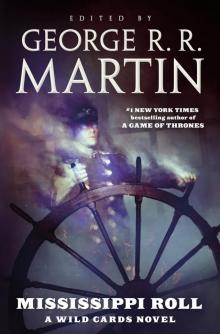 Mississippi Roll
Mississippi Roll Wild Cards V: Down and Dirty
Wild Cards V: Down and Dirty Busted Flush
Busted Flush When the Devil Drives
When the Devil Drives Dying of the Light
Dying of the Light The Ice Dragon
The Ice Dragon Sandkings
Sandkings Jokertown Shuffle
Jokertown Shuffle Dreamsongs. Volume II
Dreamsongs. Volume II Deuces Down
Deuces Down When We Were Heroes
When We Were Heroes Warriors
Warriors In the House of the Worm
In the House of the Worm Death Draws Five
Death Draws Five Dreamsongs. Volume I
Dreamsongs. Volume I Marked Cards
Marked Cards Dreamsongs
Dreamsongs Card Sharks
Card Sharks Dangerous Women
Dangerous Women Inside Straight
Inside Straight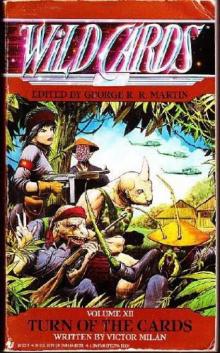 Turn of the Cards
Turn of the Cards Fevre Dream
Fevre Dream High Stakes: A Wild Cards Novel
High Stakes: A Wild Cards Novel Windhaven
Windhaven Tuf Voyaging
Tuf Voyaging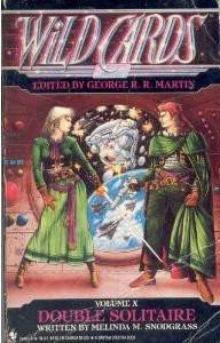 Double Solitaire
Double Solitaire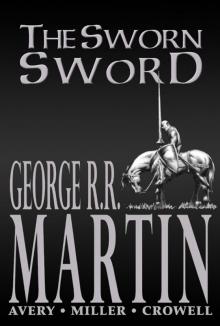 The Sworn Sword
The Sworn Sword Low Chicago
Low Chicago Dead Man's Hand
Dead Man's Hand Wild Cards
Wild Cards Black Trump
Black Trump One Eyed Jacks
One Eyed Jacks Wild Cards: Aces Abroad
Wild Cards: Aces Abroad Lowball: A Wild Cards Novel
Lowball: A Wild Cards Novel Double Solitaire (2019 Edition)
Double Solitaire (2019 Edition) Dealer's Choice
Dealer's Choice Ace in the Hole
Ace in the Hole A Song for Lya: And Other Stories
A Song for Lya: And Other Stories Three Kings
Three Kings Knaves Over Queens
Knaves Over Queens Joker Moon
Joker Moon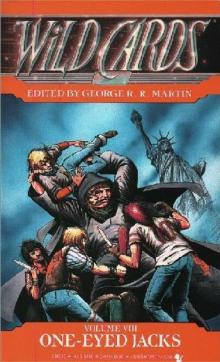 One Eyed Jacks wc-8
One Eyed Jacks wc-8 Down And Dirty wc-5
Down And Dirty wc-5 Mississippi Roll_A Wild Cards Novel
Mississippi Roll_A Wild Cards Novel A Feast for Dragons
A Feast for Dragons The Sworn Sword ttodae-2
The Sworn Sword ttodae-2 Aces High wc-2
Aces High wc-2 Wild Cards 13 : Card Sharks
Wild Cards 13 : Card Sharks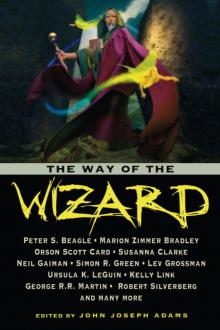 Way of the Wizard
Way of the Wizard Wild Cards VIII: One-Eyed Jacks
Wild Cards VIII: One-Eyed Jacks A Dance With Dragons: Book 5 of A Song of Ice and Fire (Song of Ice & Fire 5)
A Dance With Dragons: Book 5 of A Song of Ice and Fire (Song of Ice & Fire 5) The Princess and The Queen, Or, The Blacks and The Greens (a song of ice and fire)
The Princess and The Queen, Or, The Blacks and The Greens (a song of ice and fire) Wild Cards VI--Ace in the Hole
Wild Cards VI--Ace in the Hole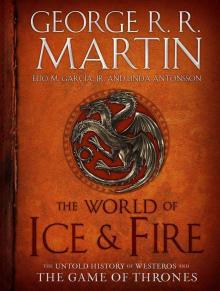 The World of Ice & Fire: The Untold History of Westeros and the Game of Thrones (A Song of Ice and Fire)
The World of Ice & Fire: The Untold History of Westeros and the Game of Thrones (A Song of Ice and Fire) The World of Ice & Fire: The Untold History of Westeros and the Game of Thrones
The World of Ice & Fire: The Untold History of Westeros and the Game of Thrones Busted Flush wc-19
Busted Flush wc-19 A Knight of the Seven Kingdoms
A Knight of the Seven Kingdoms Nightflyers: The Illustrated Edition
Nightflyers: The Illustrated Edition Wild Cards IV
Wild Cards IV Portraits of His Children
Portraits of His Children Dead Mans Hand wc-7
Dead Mans Hand wc-7 Jokers Wild wc-3
Jokers Wild wc-3 The Lonely Songs of Laren Dorr
The Lonely Songs of Laren Dorr Wild Cards III: Jokers Wild
Wild Cards III: Jokers Wild A Game of Thrones Enhanced Edition
A Game of Thrones Enhanced Edition Nightflyers & Other Stories
Nightflyers & Other Stories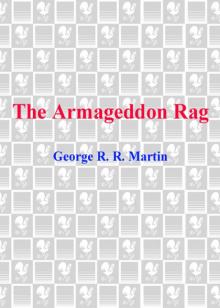 Armageddon Rag
Armageddon Rag Wild Cards: Inside Straight
Wild Cards: Inside Straight A Song for Lya
A Song for Lya A Dance with Dragons: A Song of Ice and Fire: Book Five
A Dance with Dragons: A Song of Ice and Fire: Book Five Song of Fire & Ice 01 - A Game of Thrones
Song of Fire & Ice 01 - A Game of Thrones Death Draws Five wc-17
Death Draws Five wc-17 Turn of the Cards w-12
Turn of the Cards w-12 Wild Cards 14 - Marked Cards
Wild Cards 14 - Marked Cards Hunter's Run
Hunter's Run The Glass Flower
The Glass Flower A Clash of Kings asoiaf-2
A Clash of Kings asoiaf-2 A Game of Thrones 5-Book Bundle: A Song of Ice and Fire Series: A Game of Thrones, A Clash of Kings, A Storm of Swords, A Feast for Crows, and A Dance with Dragons (Song of Ice & Fire)
A Game of Thrones 5-Book Bundle: A Song of Ice and Fire Series: A Game of Thrones, A Clash of Kings, A Storm of Swords, A Feast for Crows, and A Dance with Dragons (Song of Ice & Fire) Ace In The Hole wc-6
Ace In The Hole wc-6 Suicide Kings wc-20
Suicide Kings wc-20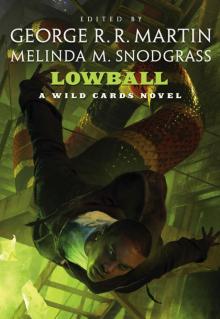 Lowball
Lowball Aces Abroad wc-4
Aces Abroad wc-4 George R. R. Martin's a Game of Thrones 4-Book Bundle
George R. R. Martin's a Game of Thrones 4-Book Bundle A Feast for Crows asoiaf-4
A Feast for Crows asoiaf-4 A Game of Thrones asoiaf-1
A Game of Thrones asoiaf-1 The Mystery Knight ttodae-3
The Mystery Knight ttodae-3 Double Solitaire w-10
Double Solitaire w-10 Wild Cards 15 - Black Trump
Wild Cards 15 - Black Trump A Storm of Swords asoiaf-3
A Storm of Swords asoiaf-3 The Hedge Knight ttodae-1
The Hedge Knight ttodae-1 Dreamsongs 2-Book Bundle
Dreamsongs 2-Book Bundle The World of Ice & Fire
The World of Ice & Fire Starlady & Fast-Friend
Starlady & Fast-Friend Old Mars
Old Mars Fantasy For Good: A Charitable Anthology
Fantasy For Good: A Charitable Anthology Wild Cards V
Wild Cards V A Dance with Dragons asoiaf-5
A Dance with Dragons asoiaf-5 Dealer's Choice w-11
Dealer's Choice w-11 The Book of Magic
The Book of Magic A Game of Thrones 4-Book Bundle
A Game of Thrones 4-Book Bundle Texas Hold 'Em
Texas Hold 'Em Wildcards wc-1
Wildcards wc-1 Rogues
Rogues Old Venus
Old Venus